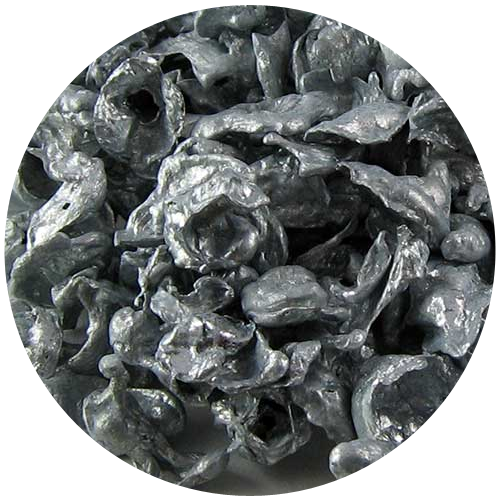Every mother knows Zinc Oxide. It’s a baby diaper rash thing. And a summer thing. You know zinc oxide. It's that slimy white stuff that lifeguards and swim teamers have been smearing on their noses as far back as the ‘60s when “Itsy Bitsy Teeny Weeny Yellow Polka Dot Bikini” hit the radio airwaves.
We don’t recycle noses at Atlas Metal and Iron.

Zinc is a metallic chemical element crucial to industrial processes. Zinc is used heavily in building structures like metal roofs, plumbing, structural support, and other such components. About 6 million tons of zinc are used annually in galvanization. Other uses are:
- Paints
- Rubber
- Cosmetics
- Pharmaceuticals
- Plastics
- Inks
- Soaps
- Batteries
- Textiles
- Electrical equipment
- Solar cells.
Approximately 70% of the zinc used worldwide is mined and 30% is recycled. More than 80% of the zinc available for recycling is recycled.
Zinc-coated steel is highly durable. The life span of products that contain zinc range from 10-15 years for cars and household appliances. Standard galvanized steel in construction is expected to last 97 years until first maintenance is required.
The Separation Process
One of the most widely applied zinc recycling procedures is Electric Arc Furnace heating.
- The scrap metal is placed inside the furnace and heated until the zinc becomes volatile.
- At this stage, zinc separates from steel in a gaseous form and is collected from the furnace.
- This gas is treated to turn it back to a solid state and it forms zinc dust.
- The dust is then melted in a kiln, where it turns into zinc oxide.
Zinc extraction can be a considerable burden on the environment. When high levels of zinc are present in soils, such as at a hazardous waste site, the metal can seep into the groundwater.
Galvanization prevents the steel or iron that it coats from rusting. Zinc naturally forms a passivation layer when exposed to air. A finished galvanized product is more durable and more reliable than unfinished metal products. Galvanized steel does not require additional preparation of the surface saving the company expenditures.
ZINC
GROWING ZINC MARKET
The use of zinc is ramping up big time, used for:
- Energy Storage
- Battery Electrolyte: Because zinc uses a water-based chemistry that results in the inability to sustain fire, it is safer and does not have the risk of thermal runaway, which can cause fires.
- Electrodes for Batteries
- Zinc-Ion Batteries are safer, cheaper, and longer-lasting than lithium batteries. Also, the raw materials used in zinc-ion batteries are more abundant than those used for lithium-ion batteries.
- Zinc Compounds
- While three quarters of all zinc is used as a metal, primarily galvanized metal, the remaining quarter is consumed as zinc compounds particularly by the rubber, chemical, paint, and agriculture industries.
- Automotive
- Zinc Alloys are often used as coatings for galvanized steel. Galvanizing steel parts and components in vehicles helps to prevent corrosion.
- Galvanized Tin Roofs
- Medical Industry
- Zinc alloys are used for medical devices as zinc is considered environmentally safe.
- Construction and Buildings
- Zinc alloys are used throughout the construction industry in a wide range of products and applications. It can be used as a solder, household fittings, and as a coating on roofing and cladding products.
Let your nose scope out zinc scrap and turn it into cash at Atlas Iron and Metal.